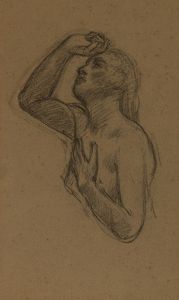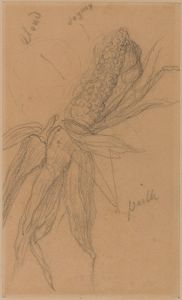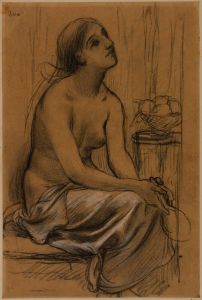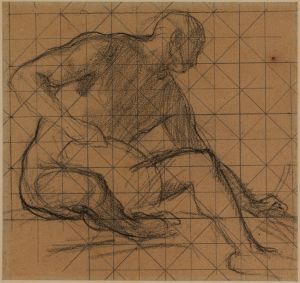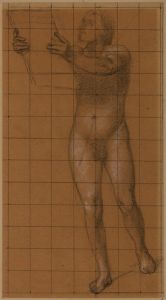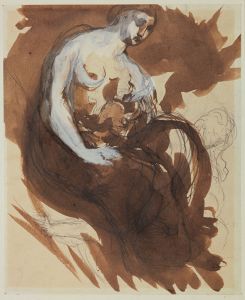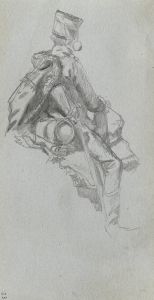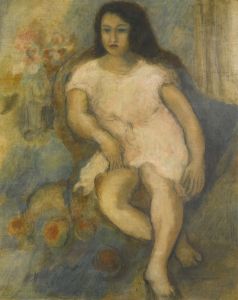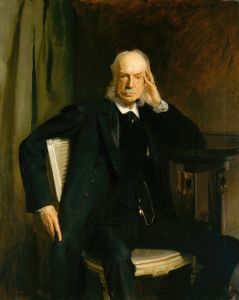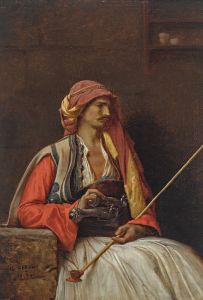
Homme nu assis
A hand-painted replica of Pierre Puvis de Chavannes’s masterpiece Homme nu assis, meticulously crafted by professional artists to capture the true essence of the original. Each piece is created with museum-quality canvas and rare mineral pigments, carefully painted by experienced artists with delicate brushstrokes and rich, layered colors to perfectly recreate the texture of the original artwork. Unlike machine-printed reproductions, this hand-painted version brings the painting to life, infused with the artist’s emotions and skill in every stroke. Whether for personal collection or home decoration, it instantly elevates the artistic atmosphere of any space.
Pierre Puvis de Chavannes was a notable French painter of the 19th century, renowned for his mural paintings and his influence on the Symbolist movement. Among his works is "Homme nu assis," which translates to "Seated Nude Man." This painting exemplifies Puvis de Chavannes' distinctive style, characterized by its subdued color palette and classical themes.
Puvis de Chavannes was born on December 14, 1824, in Lyon, France. He initially pursued a career in engineering before turning to art, studying under various artists, including Eugène Delacroix and Thomas Couture. His artistic journey led him to develop a unique style that often incorporated allegorical and mythological themes, which became a hallmark of his work.
"Homme nu assis" is a representation of Puvis de Chavannes' interest in the human form and classical antiquity. The painting depicts a nude male figure seated in a contemplative pose. The composition is marked by its simplicity and the serene expression of the subject, which reflects the artist's focus on harmony and balance. The use of muted tones and soft brushwork is typical of Puvis de Chavannes' approach, creating a sense of timelessness and tranquility.
Puvis de Chavannes' work, including "Homme nu assis," was influential in the development of modern art. His emphasis on flat, decorative surfaces and the integration of figures into their surroundings anticipated the work of later artists, such as the Nabis and the Symbolists. His murals, in particular, were highly regarded and can be found in various public buildings in France, including the Panthéon in Paris.
The artist's contribution to the art world was recognized during his lifetime, and he held a prominent position in the French art scene. He was a founding member of the Société Nationale des Beaux-Arts and served as its president. His work was exhibited widely, and he received numerous accolades for his contributions to the arts.
While "Homme nu assis" may not be as widely known as some of his larger mural projects, it nonetheless embodies the qualities that define Puvis de Chavannes' oeuvre. The painting reflects his interest in the idealized human form and his ability to convey emotion and thought through subtle gestures and expressions.
Puvis de Chavannes passed away on October 24, 1898, in Paris, leaving behind a legacy that would influence generations of artists. His work continues to be studied and appreciated for its innovative approach to composition and its impact on the trajectory of modern art.
In summary, "Homme nu assis" is a testament to Pierre Puvis de Chavannes' skill in capturing the essence of the human form and his contribution to the evolution of art in the 19th century. The painting remains an important piece within his body of work, illustrating his mastery of form, color, and composition.






